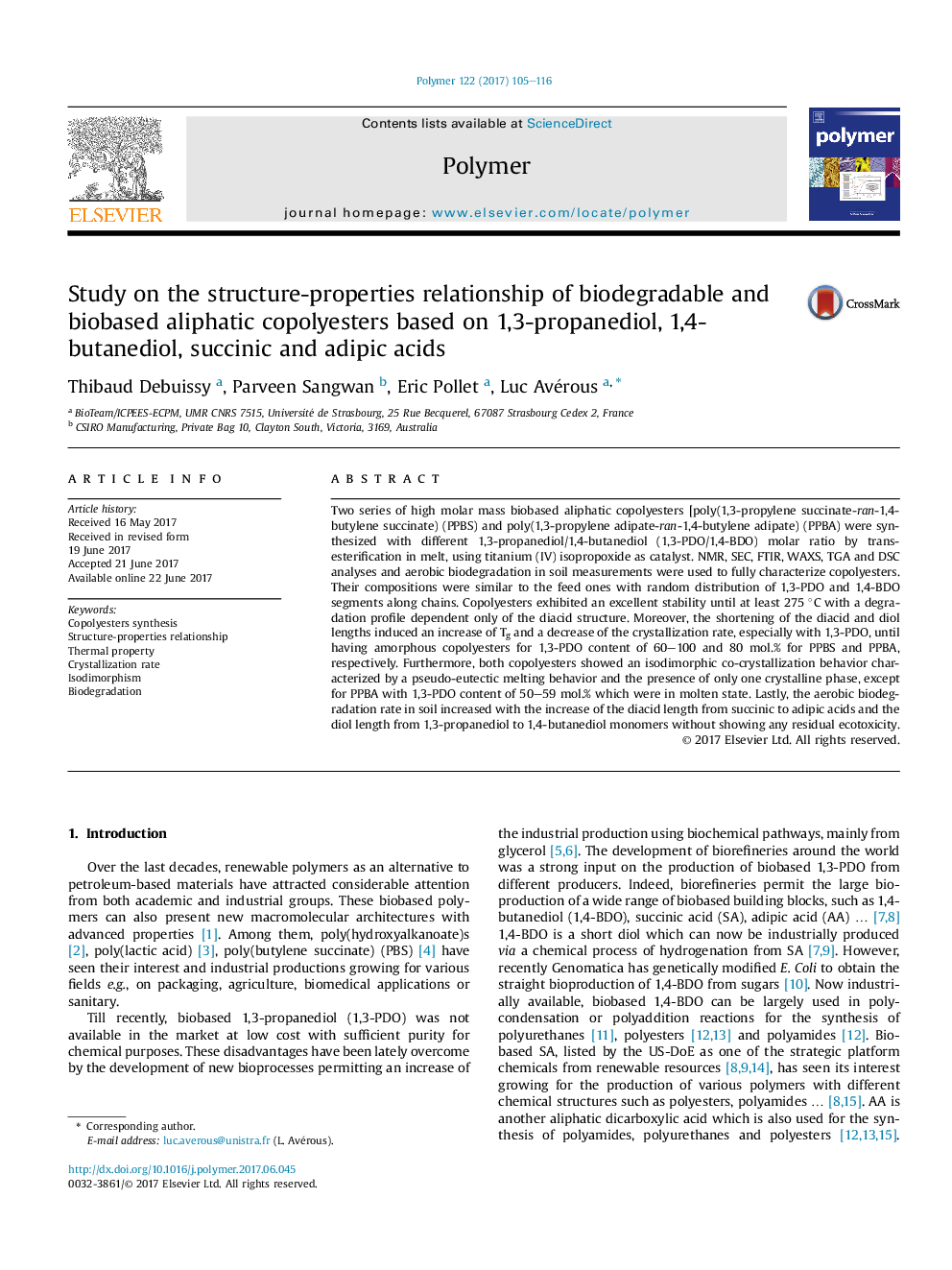| Article ID | Journal | Published Year | Pages | File Type |
|---|---|---|---|---|
| 5177928 | Polymer | 2017 | 12 Pages |
â¢High molar mass poly(propylene succinate-ran-butylene succinate) and poly(propylene adipate-ran-butylene adipate) copolyesters syntheses from biobased monomers.â¢Increase of copolyesters Tg with the shortening of the diacid and diol lengths.â¢Isodimorphic co-crystallization behavior with one crystalline phase by composition and a pseudo-eutectic melting behavior.â¢Reduction of crystallization rate with the 1,3-propanediol content leading to mainly amorphous materials after the first melting.â¢Aerobic biodegradation rate in soil increased with the increase of the diacid and diol lengths without showing ecotoxicity.
Two series of high molar mass biobased aliphatic copolyesters [poly(1,3-propylene succinate-ran-1,4-butylene succinate) (PPBS) and poly(1,3-propylene adipate-ran-1,4-butylene adipate) (PPBA) were synthesized with different 1,3-propanediol/1,4-butanediol (1,3-PDO/1,4-BDO) molar ratio by transesterification in melt, using titanium (IV) isopropoxide as catalyst. NMR, SEC, FTIR, WAXS, TGA and DSC analyses and aerobic biodegradation in soil measurements were used to fully characterize copolyesters. Their compositions were similar to the feed ones with random distribution of 1,3-PDO and 1,4-BDO segments along chains. Copolyesters exhibited an excellent stability until at least 275 °C with a degradation profile dependent only of the diacid structure. Moreover, the shortening of the diacid and diol lengths induced an increase of Tg and a decrease of the crystallization rate, especially with 1,3-PDO, until having amorphous copolyesters for 1,3-PDO content of 60-100 and 80 mol.% for PPBS and PPBA, respectively. Furthermore, both copolyesters showed an isodimorphic co-crystallization behavior characterized by a pseudo-eutectic melting behavior and the presence of only one crystalline phase, except for PPBA with 1,3-PDO content of 50-59 mol.% which were in molten state. Lastly, the aerobic biodegradation rate in soil increased with the increase of the diacid length from succinic to adipic acids and the diol length from 1,3-propanediol to 1,4-butanediol monomers without showing any residual ecotoxicity.
Graphical abstractDownload high-res image (228KB)Download full-size image
